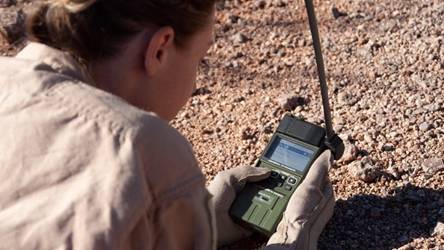As the Army extends its tactical network out to soldiers in the field, it also needs to secure the information being shared on that network. But the service was saddled with a mishmash of cryptographic communications systems, some of which might be Cold War-era old.
So, in 2012, the service launched the Army-Wide Cryptographic Network Standardization, or ACNS, initiative, with $283 million worth of modern crypto equipment set to replace thousands of end cryptographic units (ECUs) that had outdated algorithms. Since then, a team from the Army’s Research, Development and Engineering Command’s communications-electronics center has gone on the road, upgrading units at bases across the country, as well as in the Marshall Islands and South Korea.
“Modernizing these antiquated ECUs saves the Army hundreds of thousands of dollars,” Patrick Doyle, lead engineer for the In-line Network Encryptor team, said in a CERDEC release. “It provides modern crypto equipment with enhanced security and capabilities at no cost to the customer.”
So far, the team has visited 33 installations, swapping out some 1,462 outdated devices and replacing them with 879 units. With the variety of older systems in use, one modern unit can replace up to 17 legacy devices, CERDEC said.
That mix of devices does complicate the job somewhat. Installations all have different budgets and procurement cycles and over the years have built systems with what they could afford, Doyle said. “The big thing is that no two networks are ever the same.”
The team does a site survey before vising each base to get an idea of what’s ahead, and works with a CERDEC lab back at Aberdeen Proving Ground, Md., to solve any problems that might crop up. If a problem can’t be solved quickly, the lab will recreate the problem to come up with a solution, CERDEC said.
While installing the new equipment the team also takes out the old and ships it to Tobyhanna Army Depot, Pa., which prepares the new units and “demilitarizes” the devices sent back. (The ACNS program is led by Program Executive Office Command, Control and Communications-Tactical’s Project Director Network Enablers.)
In addition to standardizing and simplifying equipment in the field, the program also is expected to save money—the Army has estimated that the software and hardware upgrades could save more than $187 million during fiscal years 2012 through 2019.
This summer, the team will continue its tour at bases on the east Coast of the United States as well as in Europe, Japan and South Korea.
Source: Kevin McCaney, “Base-By-Base, Army Modernizes Its Crypto,” Defense Systems, 7/7/2014

